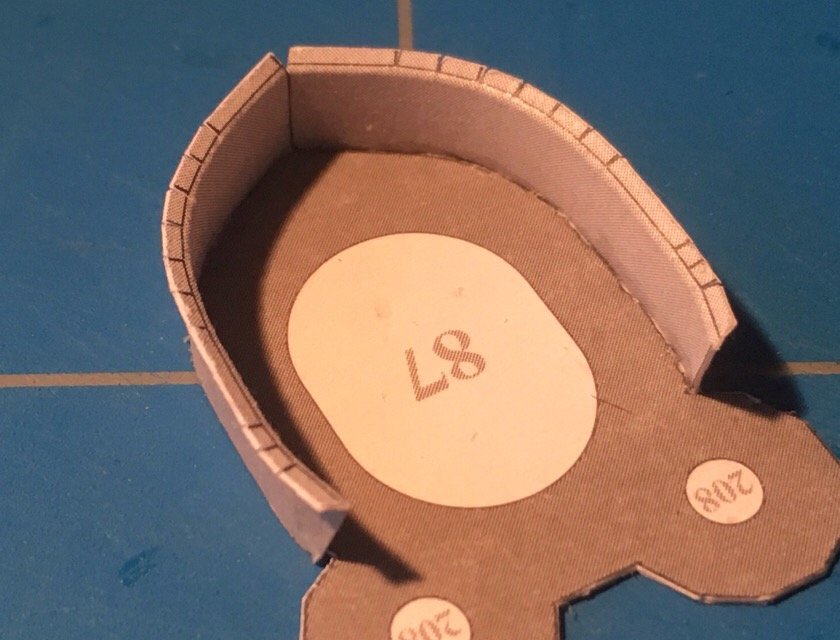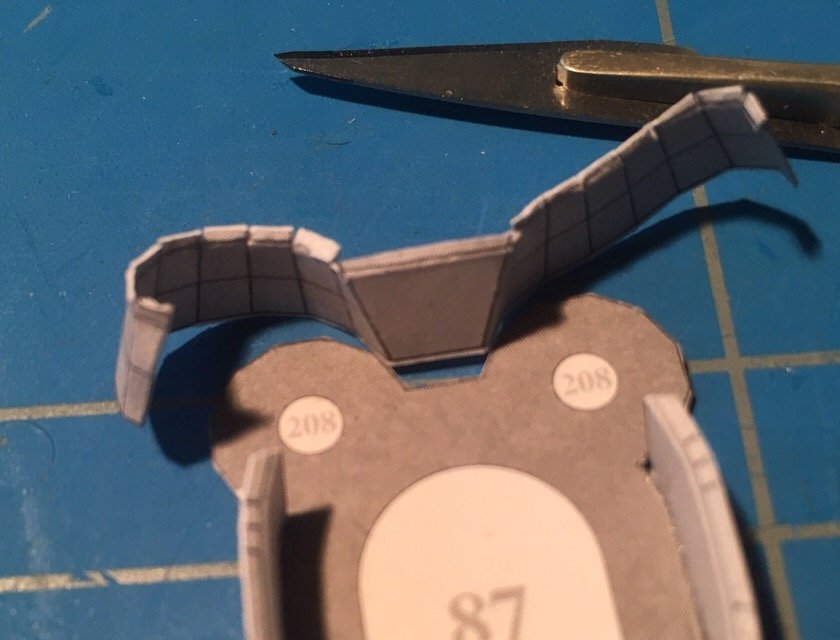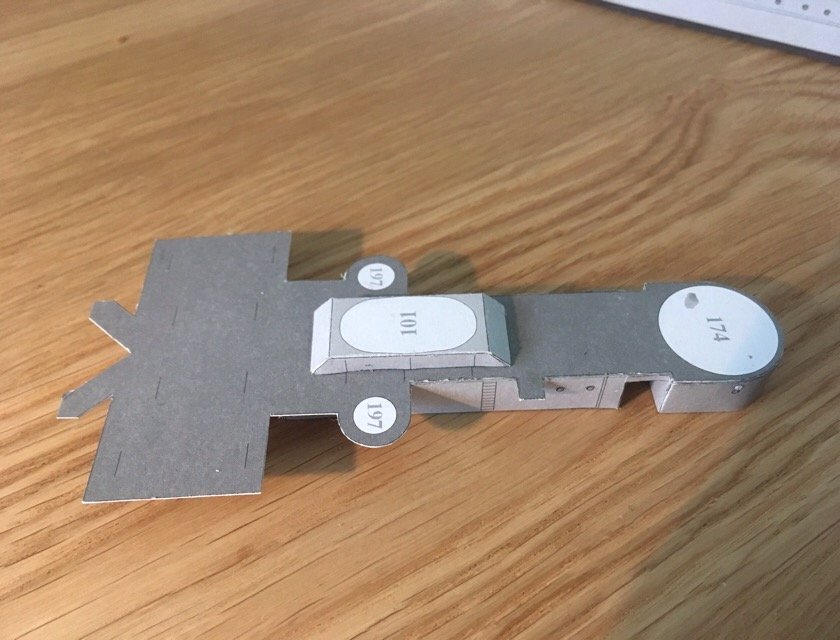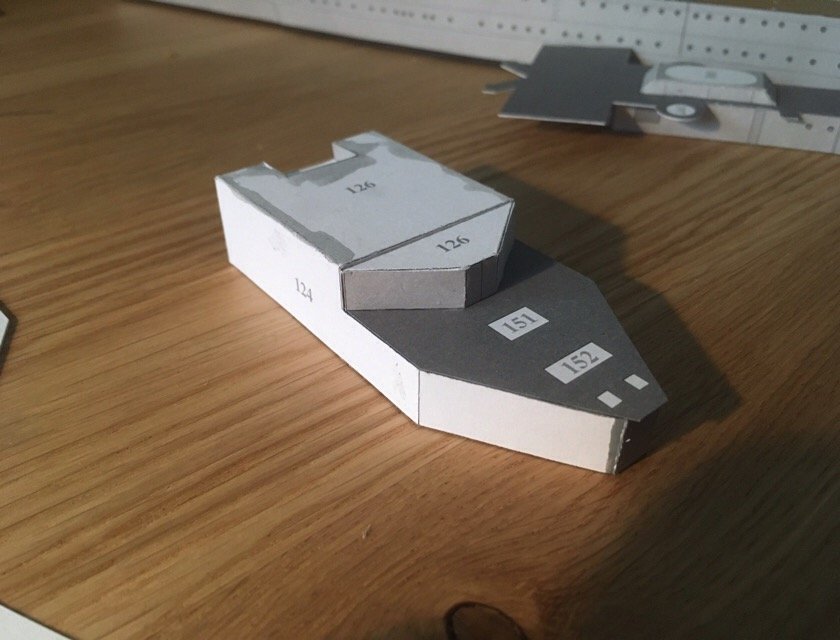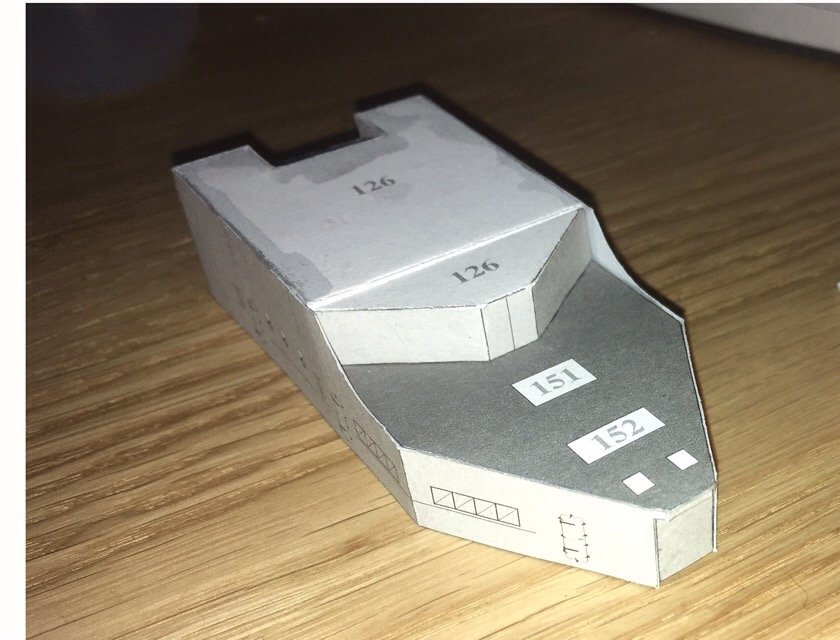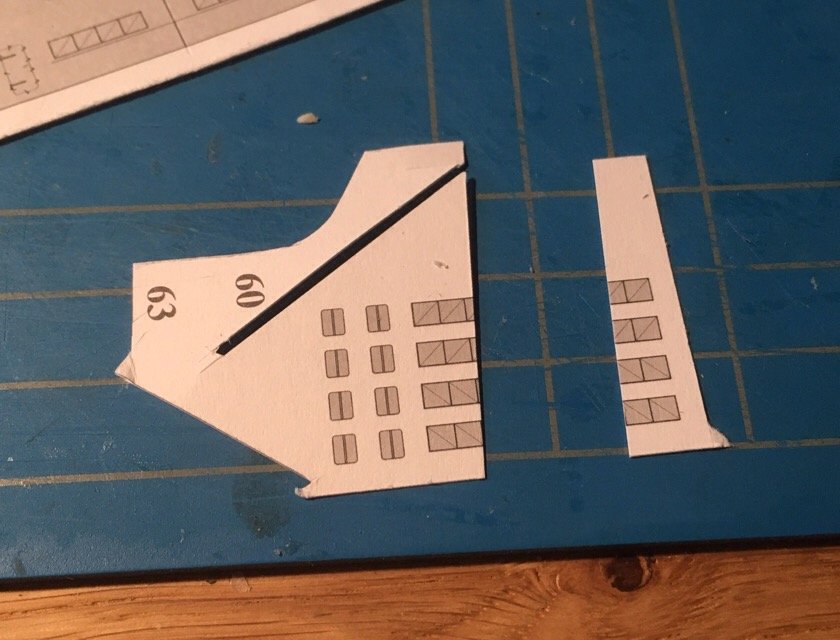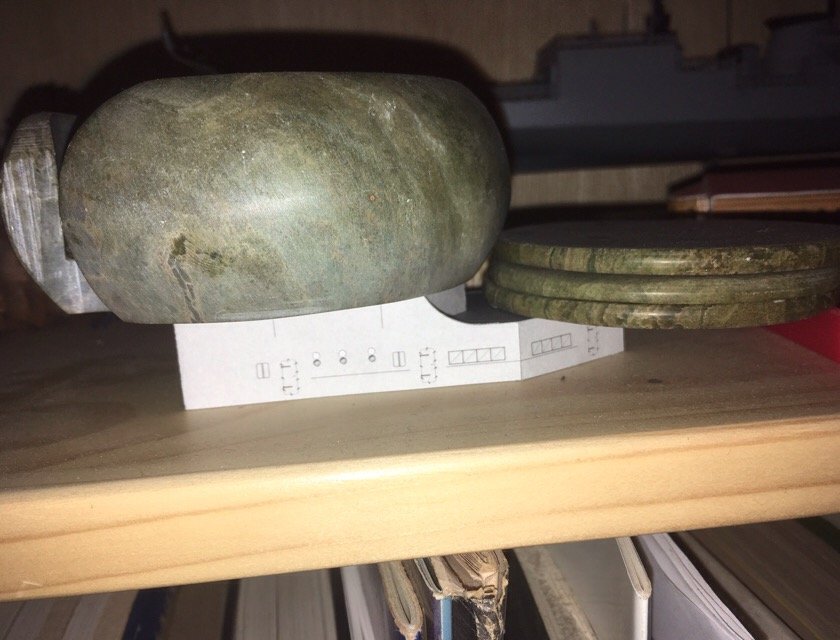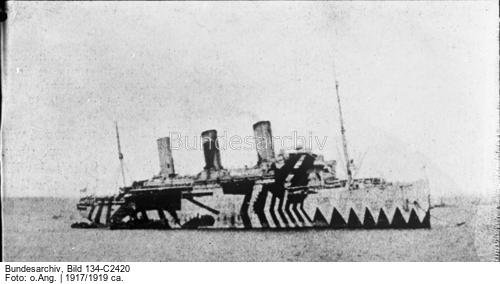-
Posts
3,516 -
Joined
-
Last visited
Content Type
Profiles
Forums
Gallery
Events
Everything posted by amateur
-
De Ruyter has been collecting some dust over the summer, but today I finally managed to soend some time on him. First I did the railing on the upper platform again, JSC did some overlength on a not so usefull place: The railing has to disassembled in three parts to get a reasonable fit. Now it is drying, for attaing the toprail needs to be done when the part is really drie (and therefore:rigid) Next was the middle deck house: I did the lower part some time ago, now I did the fullel-base. Whatever I did: the marks on the side wouldn't line up with those on the deck. Also the indent on the forward side of the deck was not large enough: the whole structure therfore stood to far aft. I made it larger, hoping there are no unexpected side-effects of the surgery:) Finally I started the aft deckhouse (the base for the anti-aircraft battery.) The idea is the same as for the other deckhouses: a white core, deck glued on top, walls glued around. Sounds simple, and it works reasonably well (apart for the top-layer of the card that tends to come loose at the edges.... Also, the back wall is a bit on the low side. Hopefully the gun-platform will hide the gap. And now it is drying under some pressure, as it tried to warp..... and finally, todays lesson: always check the back of your scrap card before using it as cutting mat Jan
-
Landstrom did great drawings. Without his book I was probably collecting stamps or something..... Jan
- 2,696 replies
-
- heller
- soleil royal
-
(and 9 more)
Tagged with:
-
I amgoing to put in the same thoughts I did in some other threads on kits. I understand thefun of building large models, but for many those kits are too large. (I still have Corels Prins Willem on my bench, and the next one has to be smaller too fit in my house) so: why not larger ships in smaller scales: makes them easier tobuild (less instead of more detail), and perhaps a larger group of interested customers. (besides: giving the current PE-technology, you can still put in lot of detail if you want) other thought: why not go for a different period: just an other around 1800 HMS might interestsome, but there is so much more. Why not turn to the sail/staem transition period: still wooden hulles, but definitiely something else. (Ithought of something like the Dutch zMS Bonaire, still in Den Helder) Third: why not turn to smaller ships: Corel had (has?) some mediterranean crafts, but around the German, Dutch, English waters there is quite a lot that is interesting enough to make a kit.... Jan
-
I hit the like on your request I will be a regular visitor over here, but as the ship is outside my knowledge-zone, I will not too often enter the discussion. Jan
- 238 replies
-
- leviathan
- troop ship
-
(and 2 more)
Tagged with:
-
When you know where to look, the stairs on the stern can also be seen on the pic of the hull upside down in drydock. (the one you posted on sept 21st) I guess that I don't tell you anything new by pointing out the pics in the German BundesArchiv? http://www.bild.bundesarchiv.de/cross-search/search/_1539258885/ Jan
-

YA-1 Yamaha Motorcycle by Dan Vadas - FINISHED - CARD
amateur replied to Dan Vadas's topic in Non-ship/categorised builds
Perhaps not up to your own 'personal standards', but as far as I'm concerned you did a very good model again. Jan -
Why not? From a kit-makers perspective, it is the ideal material: it doesn't warp as plywood does, it is easy to handle and it is cheap. Jan
-
Amati did something strange: on their website is a model of HMS Vanguard, but the pics they show are the scale 1:64 HMS Victory ..... https://amatimodel.com/ecomm/I/articolo/B130004 Jan
-

Copper Plating
amateur replied to Kurt Johnson's topic in Building, Framing, Planking and plating a ships hull and deck
It is not a new thought. The smallsvale builders use ainted tissuepaper. (Eg philip reed) Jan -
Hi Markus, not onlyneed the roedes the same weight, they need to have it at the same distance of the centre.... final balancing needs to be done when averything is ready: the roedes van have the same weight but still not be balanced. But it looks like if you will be finished before the rain season sets in. Jan
-
When typing the question, I knew youhad thought of the answer before starting the work. thanks for the explanation Jan
- 2,696 replies
-
- heller
- soleil royal
-
(and 9 more)
Tagged with:
-
Hi, are you sure over your shell-design? almost all shell like decorations I know from that period do not show the outside of the shell, but the inside, so, the outer rim is curved outward, and not inward. Jan
- 2,696 replies
-
- heller
- soleil royal
-
(and 9 more)
Tagged with:
-
I, too late, I see the chairs in front row are already taken by some popcorn addicts. I will happily take a chair in the back row Are you going to do the civilian colours 'as build' or those after the war? (I think I know the answer :)) The other dazzle-side was also rather bizarre (the bundesarchiv has some, but not many pics of her) Jan
- 238 replies
-
- leviathan
- troop ship
-
(and 2 more)
Tagged with:
-
Hi Greg, As far as I can see, the only thing that does differ between the pics of the ral shi and yours are the sailors. you did a very convincing model (again) Jan
- 405 replies
-
- tamiya
- king george v
-
(and 2 more)
Tagged with:
-
I like those old German ships. And we do not question your ability to give the hull some depth and detail (I even think your version will be better than anything Tamiya could have come up with ) Jan
-
Please, help me... I’m a metric guy. How far apart are the markings on your ruler in milimeters (or are we down to micrometers here?) Jan
- 2,696 replies
-
- heller
- soleil royal
-
(and 9 more)
Tagged with:
-
Ten is more than the drawing shows, but the famius drawing by van der Velde shows three bisible above the waterline. That leads to ten in total.... Jan
- 487 replies
-
- ship of the line
- 80 guns
-
(and 1 more)
Tagged with:
-
That is a lot ofwork for a ribbon, but the result is fantastic! Jan
- 487 replies
-
- ship of the line
- 80 guns
-
(and 1 more)
Tagged with:
-
Guess what google shows me when I do a picture search for HMS Juniper. Lots of beautiful ship paintings Google is a weird machine...... Jan
-
I thought I was the only one not being able to get the pic were I wanted it.... Your scrollwork looks promissing! Can't wait to see it on the bulwarks. However, two question: first: can you cut out the lattice without damaging the little scrolls and the second: is the lattice not a bit too heavy (ie too wide) compared to the scrolls? Jan
- 2,696 replies
-
- heller
- soleil royal
-
(and 9 more)
Tagged with:
-

YA-1 Yamaha Motorcycle by Dan Vadas - FINISHED - CARD
amateur replied to Dan Vadas's topic in Non-ship/categorised builds
You could have printed and glued the seat again (and again) till it was as perfect as you wanted it to be? The bike is already looking like one ! Jan
About us
Modelshipworld - Advancing Ship Modeling through Research
SSL Secured
Your security is important for us so this Website is SSL-Secured
NRG Mailing Address
Nautical Research Guild
237 South Lincoln Street
Westmont IL, 60559-1917
Model Ship World ® and the MSW logo are Registered Trademarks, and belong to the Nautical Research Guild (United States Patent and Trademark Office: No. 6,929,264 & No. 6,929,274, registered Dec. 20, 2022)
Helpful Links
About the NRG
If you enjoy building ship models that are historically accurate as well as beautiful, then The Nautical Research Guild (NRG) is just right for you.
The Guild is a non-profit educational organization whose mission is to “Advance Ship Modeling Through Research”. We provide support to our members in their efforts to raise the quality of their model ships.
The Nautical Research Guild has published our world-renowned quarterly magazine, The Nautical Research Journal, since 1955. The pages of the Journal are full of articles by accomplished ship modelers who show you how they create those exquisite details on their models, and by maritime historians who show you the correct details to build. The Journal is available in both print and digital editions. Go to the NRG web site (www.thenrg.org) to download a complimentary digital copy of the Journal. The NRG also publishes plan sets, books and compilations of back issues of the Journal and the former Ships in Scale and Model Ship Builder magazines.



